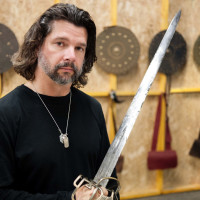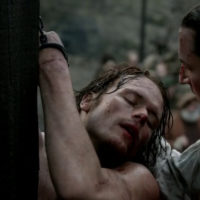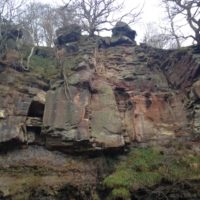Photo: Starz
The Scotsman published this interesting piece on Scottish Highlands life in 1743, the year our Claire arrives through the stones. Most of what we’ve read and watched in the series seems to ring true, apart from a few minor differences.
Here are some excerpts from the article; the information quoted is from Dr Alastair Mann, senior lecturer in history at the University of Stirling…
“The idea of the Highlands being lawless is an artificial idea that dates back to medieval times”
COUNTRY LIVING Clansmen and their families were not city dwellers, but that doesn’t mean they were isolated. “There was not this vast expanse of empty Highland countryside which we are so used to seeing on TV,” said Dr Mann. “At that time, most people lived in the country and not towns. The valleys would have been full of people living in small farm steadings. They were self-contained areas. There wasn’t the central belt domination we now know. Edinburgh had a population of just 50,000, and Glasgow was even smaller. There was not yet the push for Highlanders to move south.”
FARMING The Highlands were not locked in a state of perpetual warfare. The average clansman was a farmer who spent most of his time tending to fields or livestock. “He would be trying to feed his family. If he lived on the coast, this would be through fishing, or looking after sheep or cattle and a small amount of crops. Highlanders might be involved in a little bit of black market activity – much like someone today might pay a tradesman in cash – but the idea of the Highlands being lawless is an artificial idea that dates back to medieval times. Commerce was often carried out by bartering, rather than paying in cash. It was a hand-to-mouth existence – unless you were a chief.”
RELIGION Most of those who fought under Prince Charles Edward Stuart in the ‘45 were Episcopalian, and not Catholic, as is often presumed. But this form of worship was different to the Presbyterian-dominated Lowlands, and was viewed with suspicion by the authorities. “They were viewed as second-rate Protestants, and Highlanders resented that. The two Jacobite rebellions were very different in that regard. The first, in 1715, attracted more widespread support from across the country. The ‘45 was a more Highland affair.”
To read more, click here: SOURCE: The Scotsman








